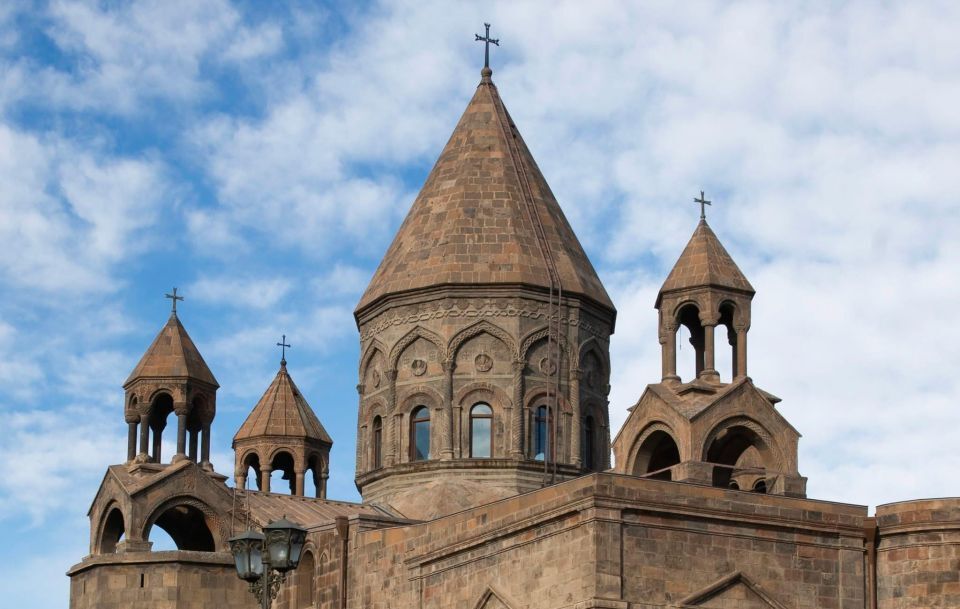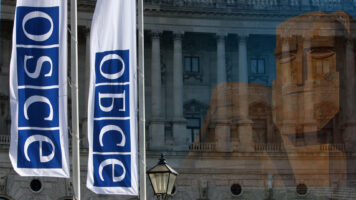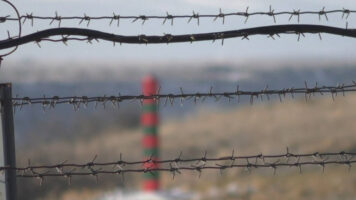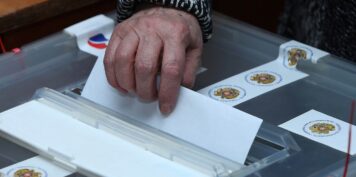Church and secular power: What’s really happening in Armenia?
18.06
2025
Part One
To objectively understand current developments, let us briefly turn to history with a few examples.
There was a vivid struggle between secular and spiritual powers in the 11th century—most notably between Emperor Henry IV (1056–1105) and the popes of Rome. Henry attempted to reject papal authority by asserting his right to appoint bishops. In response, Pope Gregory VII (1088–1099) excommunicated him. Around 1077, Henry was forced to travel barefoot to Canossa to seek forgiveness, as in such a situation, vassals had the right to rebel against the emperor. This became a powerful symbol of papal supremacy.
History provides many examples where campaigns against the Church ended in failure. Preachers, reformers, even emperors, were defeated, dethroned, or excommunicated. While rebellion often had natural causes—especially considering the “dark age” of the Catholic Church prior to the Enlightenment—it ultimately led to Protestantism, Church reform movements, and the Humanist Revolution.
A particularly significant example in Christian history is the resistance of the Greek Orthodox Church against papal authority. Unlike individual defiance, this was an institutional opposition. The Greek Orthodox Church not only attempted but succeeded in resisting papal supremacy based on historical, theological, cultural, and political grounds.
Until the 5th century, there were five patriarchates in the Christian world: Rome, Constantinople, Alexandria, Antioch, and Jerusalem. The Pope was considered “primus inter pares” (“first among equals). But from the 9th to 11th centuries, the papacy began demanding absolute authority, prompting the Eastern Church to resist, leading to a schism.
In 1054, envoys from Pope Leo IX arrived in Constantinople and demanded the Byzantines accept papal supremacy. The Patriarch refused and excommunicated the envoys. The result was a split that remains unresolved to this day.
So why did the Greek Orthodox Church oppose the Pope?
- Doctrinal reasons: First, the Pope made unilateral changes without church councils, and second, the East considered it heresy to teach that the Holy Spirit proceeds from both the Father and the Son.
- Ecclesiastical structure: The Pope aimed to centralize power, while the East favored synodal governance. Let us note that the Byzantine Empire functioned as an independent civilization with both an emperor and patriarch. The Pope tried to influence imperial politics, which politicized the schism. Even today, these churches compete for influence.
Unfortunately, Armenia is now witnessing a similar scenario—though in its early stages. Unsuccessful efforts are being made to spark a new Protestant-style movement, and behind it stand forces much larger than Nikol himself, who is seen by many as merely a tool — whether to please external centers of influence or due to a genuine belief that the Armenian Church, not Azerbaijan or Turkey, is the main threat to national security. Pashinyan often reverts from his position as prime minister to the role of a populist blogger, seemingly seeking votes ahead of upcoming elections.
And Nikol is not naive to play such a game. He understands the consequences very well, he is simply strengthening his electorate, expecting support for the upcoming political processes, and wants to convince his electorate that the black-and-white game is relevant, that the former authorities are black and need to be changed.
His goal is simple: to lump all politically active and influential critics into one category, label them as revanchists and enemies of Armenia, and then receive support at least in silence, or loyalty for his unconstitutional actions and the expected repressions.
The message is: if you’re in the opposition, encourage national values, or support the Church, then you are black, belong to the former authorities, a thief who needs to be destroyed and eliminated.
However, politically mature Armenians see through this farce. There’s a large segment of society, though, that takes every word of Pashinyan at face value. The absurdity of this belief has reached such a point that some now claim Archbishop Bagrat Galstanyan exempted his two sons from military service—a baseless conspiracy promoted by individuals who hold positions in the government; that is why the system isn’t functioning properly.
The real issue is not that the Catholicos is unfit for his role, but that Pashinyan himself is unfit for his office. No matter how much the person occupying the prime minister’s seat tries to belittle the role of the Armenian Church and relies on cheap tools in this regard, there are several reasons behind his behaviors: the first is the results of the surveys on his table, which clearly show that regardless of the anti-church campaign or neo-Bolshevik campaign over the past seven years, the overwhelming majority of the Armenian people, and especially the population of Armenia, condemns the campaign unleashed against the Armenian Church and supports the church.
The Armenian Church, as a national institution and pillar of identity, holds moral authority far above that of an unpatriotic figure like Pashinyan. It is not scientifically or morally acceptable to compare a spiritual institution to a crowd trying to educate itself or its leader.
Nikol knows all this very well; the Church simply mixed up the cards of Nikol and those who imposed the agenda on him and made it clear that if the government is unable, does not have the resources, or believes that it must accept capitulation, then the church itself will express the rights of all Armenians, Armenia, and Artsakh, at a minimum, in terms of a statement, stance, and assuming responsibility.
The Church, with its traditions, ethics, experience, structure, and networks, remains a conservative institution that does not promote reckless ideas; it is impossible to hear adventurous ideas from Etchmiadzin that would endanger Armenians and Armenia. The Church is never wrong, but the clergy can certainly be wrong.
In the history of the Armenian people, when we had or lost statehood, there were dozens of clergymen who made decisions that contradicted the political logic of their time. We also had those who even made fatal mistakes. The main question here is: does secular authority have the right to judge a representative of a religious institution in the spiritual domain? If a clergyman commits a crime, breaks the law, and disregards the state order, of course, he should be subject to the laws of the state, because in a legal state, there are no privileged people.
A question arises: how to distinguish between the fight against the Church and the antipathy toward a Church representative? In fact, this is a very important and complex issue, which is often exploited to conceal or justify the campaign against the Armenian Apostolic Church. In our opinion, the issue should be distinguished based on several clear criteria. The distinction is correct when criticism is directed at a specific individual, their behavior, or decision, not at the Church through an individual.
For example: “This bishop acted incorrectly because…” A campaign against the church is when all clergy or the entire Armenian Apostolic Church are portrayed as corrupt, harmful, or backward structures. For instance: “This Church has always betrayed the people.” The second criterion concerns the content and language of criticism. It is distinguished when constructive, fact-based criticism is used—focused on a specific act or idea.
For example: “This statement by the pope contradicts modern state interests, because…” This becomes a campaign against the church when offensive, contemptuous formulations are used, such as “super-rich,” “a structure from the dark ages,” “a business center,” etc. The third distinction is related to political goals. A fundamental disagreement is when a politician criticizes a cleric’s step but respects the institutional role of the Church. For example: “We do not share some of the approaches of the Catholicos of All Armenians, but the Armenian Apostolic Church is an important structure.” This becomes a struggle against the Church when the mistake of a cleric is used to undermine the entire structure, discredit it, and justify one’s own power. For example, with the instigation and encouragement of the government, “alternative churches” are created with organizational and financial means, or an attempt is made to deprive the Armenian Apostolic Church of its historical or legal rights. When words start to turn into actions, the separation becomes more obvious. For example, when the Armenian Apostolic Church is attacked in the legal field, its historical rights (e.g., property, educational presence) are taken away, its activities are restricted, and separatist movements are supported.
Moreover, Nikol is a master at changing the public discourse and diverting topics. Armenia’s security environment is increasingly tightening; the coveted peace treaty is still not ratified in Baku, but Nikol throws into public discussion an extremely dangerous issue that could deepen the internal social divide even more—let alone the damage being inflicted on the Armenian Church. Has His Holiness violated the oath of celibacy or not? Do you have facts? Please, present them to the relevant authorities and prove it.





